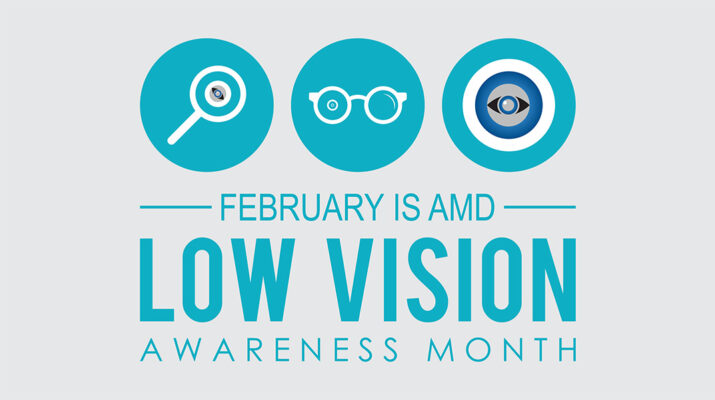With the increase in demand and fewer providers, people with low vision may not receive needed help
By Deborah Jeanne Sergeant
A 2021 study published in JAMA Ophthalmology states that 20% of those 85 and older in the US experience permanent vision loss.
Many causes for vision loss relate to advanced age.
As the baby boomer generation grows older this will increase demand for more care for those with low vision. But since the pandemic, the number of providers has decreased. This presents a significant problem for people with vision loss.
“As a result, we need more people in low vision professions,” said JoBeth Rath, director of Vision Services and Workforce Development for Goodwill of the Finger Lakes in Rochester. “Across the nation, we’re in an incredible shortage.”
This includes people like certified vision rehabilitation therapists (CVRT), certified orientation and mobility specialists (COMS) and on the clinical side, ophthalmologists and optometrists who specialize in low vision eyecare.
The therapists’ focus is helping people with low vision function better in their home and work environments. The clinical providers help patients optimize the vision they have left.
“After a low vision exam, we work with the individual to help them with being independent, employed if they wish to be employed or if they’re older and not wanting to work, helping them be independent in their home,” Rath said.
She thinks that the shortage of providers increased dramatically during the pandemic, as many providers no longer wanted to provide services in people’s homes.
“We’ve also seen a drop off of people entering into those programs,” Rath said. “Very few schools offer the one-year master’s program for CVRT.”
Because most people tend to settle down near where they attended school — at least for a few years — this keeps people with CVRT training away from the Rochester area.
Rath added that only about 40 CVRTs and 116 COMS live in New York “and that’s not enough. They cover every school district as well.”
She attributed the shortage in part to a lack of knowledge about the profession.
“We’ll continue to see increases in visual impairment, but we’re not necessarily seeing the awareness of blindness at younger ages increase,” Rath said.
It’s also rough to afford going back to school when jobs are plentiful for people with a bachelor’s degree.
On the medical side of low vision care, the exams tend to take four to five times longer than an exam for someone with average vision. This means lower reimbursement for the provider. Goodwill works with Flaum Eye Institute to provide low vision exams and has other revenue streams to help support this mission.
“There are a lot of downsides financially to providing this service,” Rath said. “It’s a passion project more than anything. They have to make a choice to reduce revenue.”
The mission is what attracted Rath to work at Goodwill. She used to work in human resources in the banking industry but wanted to do more impactful work. Goodwill hired her to do workforce development and during the pandemic; she became engaged with working with the low vision part of Goodwill and now does both.
“The vision issue is a passion,” she said. “I don’t have good vision in one eye and all my life I’ve heard, ‘What if something happens to her good eye?’ But I’ve seen people without vision live very full lives.”
She has worked with Goodwill for 13 years.
“Being blind or visually impaired can be very isolating,” Rath said. “During COVID, we saw a lot of emotional health issues more so for people who are visually impaired.”
It’s also been frustrating that many volunteers have not returned to perform tasks like driving visually impaired clients of Goodwill. Many volunteers for this and other nonprofits are older adults who have been understandably wary of catching COVID.
“We’d love to talk with anyone interested in this field,” Rath said. “If you want a meaningful career with a decent salary, this is a great one. This service needs to happen in our community. Blindness is a low-incident disability so I’m not sure people understand how important it is.”

